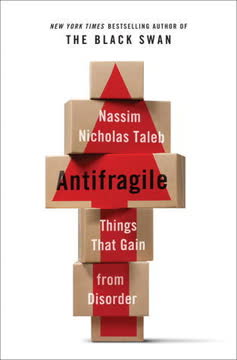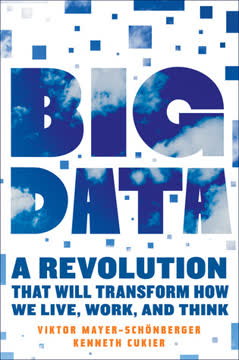重点摘要
1. 失败是进步和创新的关键
“进化比你聪明。”
接受失败。 创新和进步往往源于多次尝试和失败。市场经济、科学发现和技术进步都依赖于试错过程。成功的公司和个人明白,失败不仅是不可避免的,而且是成长所必需的。
从错误中学习。 许多突破性的发明和发现,如青霉素和微波炉,都是意外失败或意外结果的产物。通过分析和学习失败,我们可以获得宝贵的见解,提高未来成功的机会。
- 成功失败的例子:
- 便利贴(失败的粘合剂)
- 伟哥(失败的心脏药物)
- WD-40(第40次尝试制造防水配方)
2. 在复杂系统中通过试错进行适应
“摸着石头过河。”
接受复杂性。 在经济、生态系统或社会等复杂系统中,无法确定地预测结果。我们应采用持续适应和实验的方法,而不是依赖僵化的计划或专家意见。
实施适应性策略。 组织和个人可以通过实施允许灵活性和学习的策略受益。这可能包括:
- 适应性问题解决技术:
- 运行小规模试点项目
- 在各种情况下使用A/B测试
- 实施快速原型和迭代
- 鼓励多样化的观点和解决方案
3. 为实验和新想法创造安全空间
“再简单不过了!”
促进创新。 创造可以安全探索和测试新想法的环境对于进步至关重要。这适用于从商业和科学到治理和个人发展的各个领域。
实施“臭鼬工厂”。 许多成功的组织都有专门的部门或流程,用于在正常运营的压力和限制之外开发激进的新想法。这些安全空间允许更大的创造力和冒险精神。
- 创新友好环境的例子:
- 谷歌的“20%时间”用于个人项目
- 3M的“15%文化”用于实验
- 洛克希德·马丁的原始臭鼬工厂
- 学术休假和研究资助
4. 在问题解决中鼓励多样性和选择
“寻找新想法并尝试新事物。”
多样化方法。 面对复杂问题时,同时探索多种解决方案是有益的。这增加了找到有效解决方案的机会,并有助于避免陷入次优方法。
实施选择机制。 在生成多样化解决方案后,关键是要有有效的方法来识别和推广最成功的解决方案。这可能包括:
- 解决方案选择方法:
- 严格的测试和评估
- 市场反馈和客户意见
- 同行评审和专家评估
- 数据驱动的绩效指标
5. 分权决策以提高适应性
“时间和地点的具体情况知识。”
赋权地方决策者。 在快速变化的环境中,那些最接近情况的人往往拥有最佳信息和快速响应的能力。分权决策可以导致更有效和更灵活的组织。
平衡中央协调和地方自治。 虽然分权通常是有益的,但通常需要某种程度的中央协调。挑战在于为每个具体情况找到合适的平衡。
- 成功分权的例子:
- 全食超市的授权门店团队
- 美国军队的任务指挥采用
- 维基百科的分布式编辑系统
- 开源软件开发社区
6. 克服心理障碍从错误中学习
“挑战你自己制造的现状。”
认识认知偏见。 人类心理常常使我们难以从错误中学习。我们倾向于否认失败,追逐损失,或将过去的决定重新解释为比实际更成功。
制定策略克服偏见。 为了有效地从错误中学习,我们需要培养自我意识并实施对抗自然倾向的实践。
- 更好地从错误中学习的技巧:
- 寻求他人的诚实反馈
- 详细记录决策和结果
- 定期回顾和分析过去的失败
- 进行“预检”以预见潜在问题
7. 使用反馈循环改进系统和流程
“我们不应该试图设计一个更好的世界。我们应该建立更好的反馈循环。”
实施有效的反馈机制。 在复杂系统中,专注于创建良好的反馈循环往往比试图从一开始就设计完美的解决方案更有成效。
缩短反馈周期。 反馈越快越准确,系统适应和改进的速度就越快。这适用于从软件开发到公共政策的各种情况。
- 有效反馈循环的例子:
- 敏捷软件开发方法
- 产品设计中的持续客户反馈
- 制造中的实时绩效指标
- 发展经济学中的随机对照试验
8. 在个人成长中平衡多元化和纪律性
“有纪律的多元化。”
探索多样化的经验。 个人成长往往来自尝试新事物并让自己接触到多样化的想法和经验。这种“多元化”帮助我们发现新机会并发展更广阔的视野。
专注于有效的事物。 虽然探索很重要,但同样重要的是认识到某些事物有效并致力于它。这种“纪律性”使我们能够发展精通并取得有意义的进步。
- 平衡探索和专注的策略:
- 定期安排时间进行新体验
- 定期重新评估目标和承诺
- 发展技能和兴趣的组合
- 在选定领域进行有意识的学习
9. 实施碳定价以应对气候变化
“温室气体很昂贵。”
利用市场力量。 实施碳排放定价可以激励个人和企业减少碳足迹,而无需复杂的法规或微观管理。
允许分权问题解决。 通过设定碳价格,我们可以释放数百万人寻找解决方案的创造力和创新,而不是依赖集中计划。
- 碳定价的好处:
- 鼓励能源效率和创新
- 提供减少排放的灵活性
- 为长期规划创造明确的经济信号
- 可以为其他气候倡议筹集资金
10. 解耦紧密耦合的系统以防止灾难性失败
“进化比你聪明。”
认识系统性风险。 在紧密耦合的系统中,组件高度相互依赖,小的失败可以迅速演变成大规模灾难。这在金融和关键基础设施等领域尤为相关。
实施保护措施和断点。 通过引入有意的断点或松散组件之间的连接,我们可以使系统更能抵御冲击,防止局部失败演变成系统性危机。
- 解耦系统的策略:
- 在股票市场实施金融“断路器”
- 设计具有明确接口的模块化系统
- 创建冗余和备份系统
- 建立隔离失败的明确协议
最后更新日期:
FAQ
What's Adapt: Why Success Always Starts with Failure about?
- Focus on Failure and Success: The book explores how failure is an essential part of the process of adaptation and success in various fields, including economics, business, and personal development.
- Trial-and-Error Methodology: Tim Harford emphasizes the importance of trial-and-error as a method for problem-solving, arguing that embracing failure can lead to innovative solutions.
- Real-World Examples: Harford uses a variety of real-world examples, from the development of the Spitfire to microfinance initiatives, to illustrate how adaptation occurs through experimentation and learning from mistakes.
Why should I read Adapt: Why Success Always Starts with Failure?
- Insightful Perspective: The book provides a fresh perspective on the role of failure in achieving success, challenging the conventional wisdom that success is solely the result of careful planning and execution.
- Practical Applications: Readers can apply the lessons from the book to their own lives, whether in business, government, or personal endeavors, making it relevant to a wide audience.
- Engaging Writing Style: Tim Harford's engaging narrative style, combined with compelling anecdotes, makes complex economic concepts accessible and enjoyable to read.
What are the key takeaways of Adapt: Why Success Always Starts with Failure?
- Embrace Failure: One of the main messages is that failure should not be feared but embraced as a necessary step towards innovation and success.
- Importance of Variation and Selection: Harford discusses the concepts of variation and selection, emphasizing that successful adaptation often requires trying multiple approaches and learning from the outcomes.
- Complexity of Modern Problems: The book highlights the complexity of contemporary issues, suggesting that simple solutions are often inadequate and that adaptive strategies are essential.
What are the best quotes from Adapt: Why Success Always Starts with Failure and what do they mean?
- “The curious task of economics is to demonstrate to men how little they really know about what they imagine they can design.”: This quote underscores the limitations of human foresight in complex systems, suggesting that adaptability is more valuable than rigid planning.
- “Cross the river by feeling for stones.”: This metaphor illustrates the idea of navigating uncertainty through incremental steps and experimentation rather than attempting to leap across the river all at once.
- “If we don’t know whether we are doing any good, then we are not any better than the medieval doctors and their leeches.”: This statement emphasizes the importance of evidence-based practices in development and the need for rigorous evaluation of interventions.
How does Tim Harford define adaptation in Adapt: Why Success Always Starts with Failure?
- Adaptation as a Process: Harford defines adaptation as a continuous process of learning and adjusting based on feedback from the environment, rather than a one-time event.
- Trial-and-Error Framework: He advocates for a trial-and-error framework where individuals and organizations experiment with different strategies, learn from failures, and refine their approaches.
- Dynamic Learning: Adaptation involves dynamic learning, where the ability to pivot and change direction based on new information is crucial for success in complex situations.
What role does failure play in success according to Adapt: Why Success Always Starts with Failure?
- Failure as a Teacher: Harford posits that failure serves as a critical teacher, providing valuable lessons that can lead to better decision-making in the future.
- Encouraging Innovation: By accepting failure, individuals and organizations create an environment that encourages innovation and creativity, allowing for the exploration of new ideas.
- Resilience Building: Learning to cope with and learn from failure builds resilience, which is essential for navigating the complexities of modern life and business.
What is the significance of the Palchinsky principles in Adapt: Why Success Always Starts with Failure?
- Three Key Principles: The Palchinsky principles emphasize the importance of seeking out new ideas, conducting experiments on a manageable scale, and learning from feedback to improve outcomes.
- Encouraging Experimentation: These principles encourage a culture of experimentation where failure is seen as a part of the learning process, rather than a setback.
- Application Across Fields: Harford suggests that these principles can be applied in various fields, from business to government, to foster innovation and effective problem-solving.
How can organizations implement the ideas from Adapt: Why Success Always Starts with Failure?
- Foster a Culture of Experimentation: Organizations should create an environment where employees feel safe to experiment and fail, encouraging innovation and creative problem-solving.
- Implement Feedback Loops: Establishing robust feedback mechanisms allows organizations to learn from their experiences and adapt their strategies based on real-world outcomes.
- Encourage Diverse Perspectives: By valuing diverse viewpoints and encouraging open dialogue, organizations can enhance their ability to adapt and respond to complex challenges effectively.
How does Adapt: Why Success Always Starts with Failure relate to climate change and individual behavior?
- Individual Impact on Climate: Harford discusses how personal choices, such as dietary habits and transportation methods, can significantly affect carbon emissions.
- Complexity of Eco-Friendly Choices: The book highlights the challenges individuals face in making environmentally friendly choices, as many decisions are not straightforward.
- Encouraging Informed Decisions: By understanding the complexities of climate change and individual behavior, readers can make more informed choices that contribute positively to the environment.
What are some examples of successful adaptation in Adapt: Why Success Always Starts with Failure?
- The Toaster Project: Harford discusses Thomas Thwaites's attempt to build a toaster from scratch, highlighting the complexity and interconnectedness of modern technology.
- The Spitfire: The development of the Spitfire during World War II serves as an example of how a flexible approach to design and adaptation can lead to significant breakthroughs.
- Microfinance Initiatives: Harford uses the story of Muhammad Yunus and the Grameen Bank to illustrate how trial-and-error methods can lead to successful solutions for poverty alleviation.
How does Adapt: Why Success Always Starts with Failure address the concept of disruptive innovation?
- Understanding Disruptive Technologies: Harford explains that disruptive innovations often emerge from unexpected sources and can challenge established market leaders.
- Psychological Barriers to Adaptation: The book highlights the psychological and organizational challenges that prevent established companies from embracing disruptive innovations.
- Encouraging a Flexible Mindset: To thrive in a landscape of disruptive innovation, organizations must cultivate a flexible mindset that embraces change and experimentation.
评论
Adapt 因其关于接受失败和实验以取得成功的引人入胜的论点而普遍获得好评。读者欣赏哈福德引人入胜的写作风格、多样的例子和实用的建议。一些人批评该书篇幅过长和重复,认为可以精简。该书探讨了在从商业到个人生活的各个领域中适应复杂问题的内容,引起了许多人的共鸣。尽管有些人觉得某些部分乏味,但大多数人都认为核心信息有价值且发人深省。
Similar Books



















